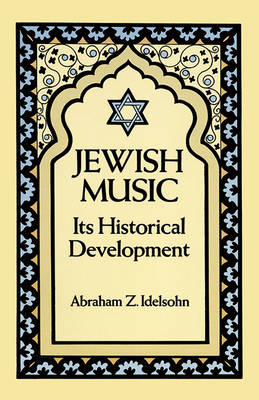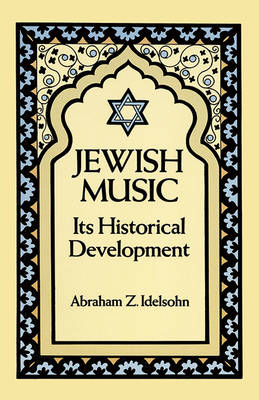
- Retrait gratuit dans votre magasin Club
- 7.000.000 titres dans notre catalogue
- Payer en toute sécurité
- Toujours un magasin près de chez vous
- Retrait gratuit dans votre magasin Club
- 7.000.0000 titres dans notre catalogue
- Payer en toute sécurité
- Toujours un magasin près de chez vous
Description
In this landmark of musical scholarship, the leading 20th-century authority on Jewish music describes and analyzes its elements and characteristics, and chronicles its development from the earliest appearance of Semitic song two thousand years ago to the early 20th century. Drawing upon years of research, including his own collecting of synagogue and folk songs in Middle Eastern and European Jewish communities, the author examines the music as a tonal expression of Judaism and Jewish life, containing original elements and features reflecting the spiritual aspects of Jewish culture.
The song of the synagogue is traced from its origins in the Middle East through its evolution there and throughout the cultures of Eastern, Central, and Western Europe and the United States. The mystical songs of the Chassidim, the traditions of the Badchonim and Klezmorim, and other important aspects of the history of Jewish folk music are covered in detail as well.
The book is written not only for scholars and musicians but also for lay persons interested in a serious study of the subject. Technical sections are printed in smaller type, and non-English terms are defined. The book is liberally illustrated with every type of music discussed. A new introduction by noted scholar Arbie Orenstein highlights the book's enduring values and significance. For musicologists, ethnographers, and students of Jewish history and culture, this fascinating book remains the most comprehensive one-volume study of the development and meaning of Jewish music over a thousand years of history.
Spécifications
Parties prenantes
- Auteur(s) :
- Editeur:
Contenu
- Nombre de pages :
- 576
- Langue:
- Anglais
- Collection :
Caractéristiques
- EAN:
- 9780486271477
- Date de parution :
- 30-11-11
- Format:
- Livre broché
- Format numérique:
- Trade paperback (VS)
- Dimensions :
- 135 mm x 216 mm
- Poids :
- 589 g

Les avis
Nous publions uniquement les avis qui respectent les conditions requises. Consultez nos conditions pour les avis.






